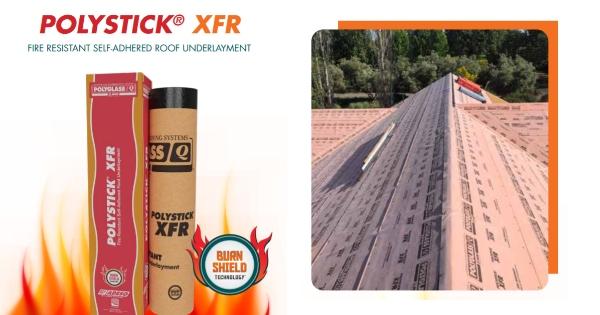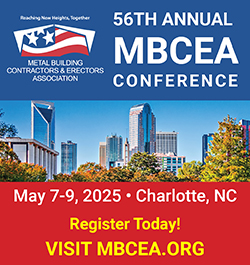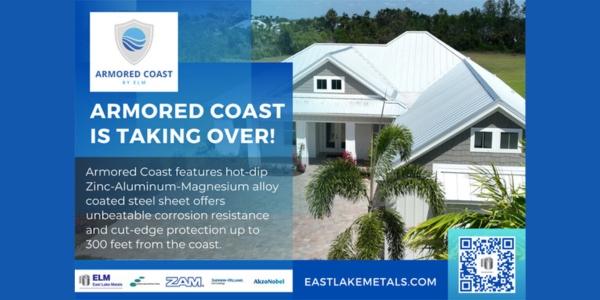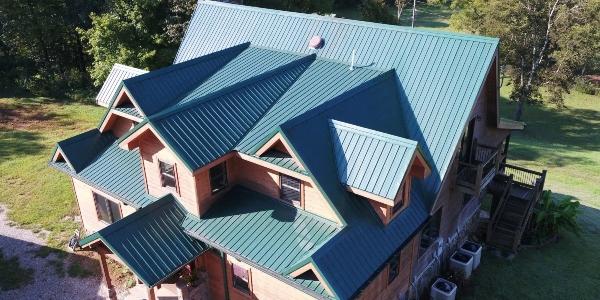UP TO THE MINUTE
The Importance of Choosing the Right Underlayment for Metal Roofing Systems

By Polyglass.
A great underlayment acts as a safeguard against leaks and boosts the overall performance of the roof.
One aspect of installing a metal roof that is often missed is the use of a good underlayment. Not only is the underlayment below the metal effective against water getting into a structure, but it also enhances the capabilities of the roofing system.
At its most basic, an underlayment is defined as a water-resistant barrier attached directly to the roof deck that lies beneath all other roof elements, including the metal cladding. There are several products on the market that can achieve this, but with metal roofs, basic is simply not good enough.
At its best the choice of underlayment is constructed to not only provide true waterproofing protection but to also perform within the high temperature environment of a metal system. Polyglass’ Polystick® XFR is the only 2 in 1 underlayment to provide 'superior fire and ember resistance' and waterproofing. Our competitors need to have 2 separate membranes for ember resistance.
The formulation of the compounds and other components used to produce the underlayment should be independently tested to withstand the high temperature environment often associated with a metal roof assembly – at a minimum of 240°F, and with premium products as high as 265°F. As important as the performance of an underlayment when considering its construction is contractor safety and product ‘walkability.’ Surface film or finishing should provide at least a minimum ‘slip resistance’ and grip which allows the contractor to work safely and efficiently.
Historically, underlayments have been mechanically fastened or part of a multi-layer bonded assembly but as a result of advancements in self-adhered technology there are now self-adhered products that perform exceptionally well in a metal roofing environment which are no longer installed with torches, hot asphalt, messy cold adhesives or other risk-based application methods. Self-adhered products, for example those with ADESO® technology, are simple peel and stick type applications with only the need for periodic hidden back-nailing. These technological advancements offer options for superior products to those allowed by Building Code, increasing performance and efficiency for both the building owner and installers.
National and local building codes are often updated to serve as a model to provide guidelines for regulating building (and roofing) practices. These codes are intended to protect life, provide for environmental sustainability, fire safety and protection against natural forces which can impact the integrity of the roof and building structure. The choice of underlayment is critical in meeting these requirements in the most cost-effective way possible. In certain localities it is mandatory that the metal roof assembly meet a minimum of Class A fire rating as tested under UL 790 while for some building owners it simply provides peace of mind.
For many in wildfire prone areas of the country, the added security of a system which is tested to be ‘burning ember resistant’ may be a local requirement such as areas regulated by the California Department of Forestry and Fire Protection. Approved products are also often regulated locally, such as high wind products in hurricane zones such as Miami-Dade County Product Approvals, the Texas Department of Insurance, or fire safety as part of the Cal-Fire Building Material Lists; these ratings or approvals should also be carefully considered as part of the underlayment decision in certain regions.
Underestimating the importance of the underlayment for the safety, efficiency and life-cycle costs of a structure with an architectural metal roof assembly may lead to undermining the value of the investment. Although cost may be a factor, when considering the overall investment of an architectural metal roof assembly selecting a premium underlayment may be a very small price to pay to ensure the best possible product for your client and their building or home.
*ASTM D 1970 Standard Specification for Self-Adhering Polymer Modified Bituminous Sheet Materials Used as Steep Roofing Underlayment for Ice mad Protection.
Learn more about Polyglass in their directory or visit www.polyglass.com.



















Comments
Leave a Reply
Have an account? Login to leave a comment!
Sign In